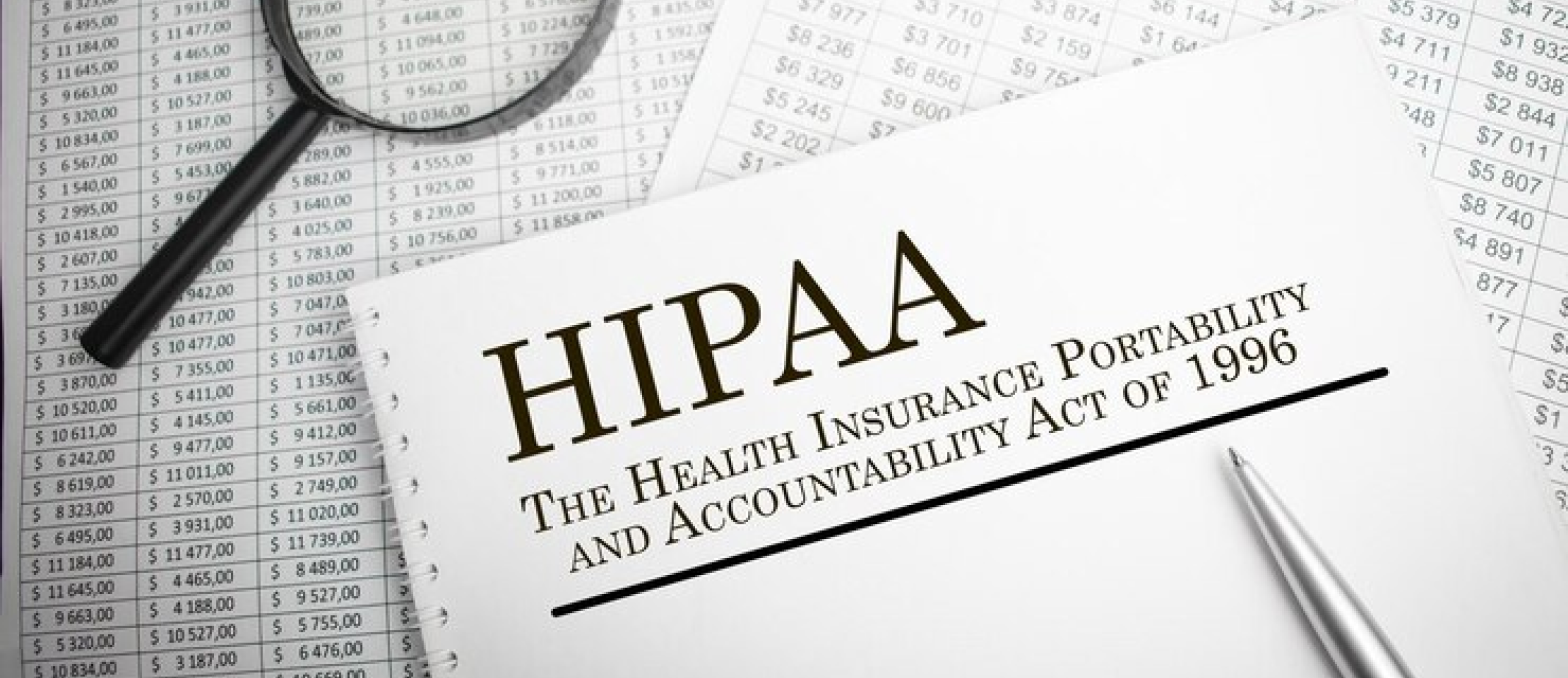Data protection and privacy have become key priorities in today’s digital environment. Particularly with respect to sensitive healthcare data such as enrollment information. Adherence to HIPAA compliance guidelines becomes especially relevant when discussing enrollment data from EDI 834 forms. Why?
HIPAA came in 1996 to safeguard individuals’ healthcare data privacy and security. With advances in technology, EDI in healthcare has become widely utilized. This is for exchanging enrollment data in 834 formats EDI 834 systems; therefore, digital systems users need to appreciate HIPAA compliance to protect sensitive patient information.
HIPAA compliance guidelines play a significant role in safeguarding enrollment data under EDI 834. Organizations adhering to these regulations and implementing robust EDI solutions can ensure confidentiality, integrity, and availability of this information. This benefits both healthcare industry players and individual patients involved. We will explore HIPAA’s significance regarding 834 enrollment data, the role of EDI solutions in secure data exchange, and any risks of non-compliance herein.
Table of Contents
HIPAA Compliance: Overview
HIPAA stands for Health Insurance Portability and Accountability Act in the U.S.. It refers to efforts undertaken by healthcare organizations or any entity responsible. This is for handling PHI to comply with HIPAA rules as per legislation.
One of the key components of HIPAA compliance is protecting PHI. This refers to any individually identifiable health data transmitted or maintained by covered entities. Individuals or organizations perform certain functions or activities on behalf of covered entities such as business associates performing functions on their behalf .
Organizations looking to comply with HIPAA must implement administrative, physical and technical safeguards spanning different categories, This includes Administrative safeguards include policies and procedures related to the use and disclosure of PHI. As well as workforce training and risk management must be there. Physical safeguards involve measures such as secure facilities with access controls as well as device/media restrictions. Technical safeguards cover devices used to secure PHI like encryption keys. It also covers audit controls. These steps help achieve HIPAA compliance.
Importance of HIPAA Compliance
HIPAA compliance is crucial for several reasons. Most importantly, it helps safeguard patient privacy and ensure the confidentiality of health data. It also guards ssential elements in building trust between healthcare providers and patients alike. Compliance also serves to avoid data breaches that have serious financial and legal repercussions for organizations.
HIPAA compliance has the support of law, and any violations can lead to significant fines or even criminal prosecution. Furthermore, compliance shows organizations’ dedication to data security and privacy protection. This gives them a competitive edge within the healthcare industry.
HIPAA compliance is vitally important to any organization that handles PHI. It ensure patient privacy and secure their health information. Not only this, it also helps organizations avoid legal and financial repercussions as well. By following HIPAA’s regulations and safeguards closely, organizations can cultivate an atmosphere of security and trust within healthcare.
The best part to get a complete understanding of the same is to connect with the best benefits enrollment company for all the assistance.
Understanding EDI 834 Enrollment Data
834 benefits enrollment and maintenance is an industry-standard used in healthcare. It is done to transmit enrollment and eligibility information. Understanding its significance for healthcare organizations, insurers, and other parties involved with enrollment processes is imperative. Let’s explore its significance as well as its components.
First and foremost, EDI 834 enrollment data provides a standardized method of exchanging enrollment information between entities. This ensures the data remains consistent, accurate, and easily understandable. All this without manual data entry, errors occur less often, and improved efficiency.
EDI 834 file consists of various segments and elements which contain essential enrollee details. This includes demographic details such as name, address, date of birth and contact info. It also covers eligibility status as well as dependent information if applicable.
Benefits of EDI 834 File
One of the key advantages of using EDI 834 enrollment data is its ability to streamline enrollment processes. Healthcare organizations can easily exchange information with insurance providers, government agencies and other parties. This allows faster processing times while decreasing paperwork requirements as well as errors or discrepancies.
EDI 834 enrollment data can also play an essential part in complying with regulatory requirements. This includes healthcare laws like the Affordable Care Act (ACA). By adopting this standardized format for enrollment and eligibility data exchange, organizations can ensure they adhere to these regulations.
EDI 834 enrollment data also allows real-time updates and changes to enrollee information. It makes real-time changes possible. For instance, if there are changes to eligibility status, coverage details, or personal data of an enrollee requiring transmission quickly and efficiently, using an EDI 834 file ensures all parties involved always receive accurate, up-to-date data quickly. It reduces chances of errors or outdated records.
Hopefully, you have got complete clarity about this EDI enrollment and the approach it takes to help you.
Overview of the HIPAA Privacy Rule and its Relevance to EDI 834
HIPAA Privacy Rule is a part of its wider HIPAA legislation that came into force in 1996. It provides standards to safeguard individuals’ medical records and other personal health data. It applies to healthcare providers, plans and clearinghouses as well as their business associates handling PHI on their behalf; particularly pertinent is EDI 834 transaction which involves exchanging enrollment/disenrollment data between health plans and employers.
HIPAA Privacy Rule sets limits and conditions on the use and disclosure of PHI without patient authorization. It provides individuals certain rights over their health information. This includes access, request amendments and an accounting of disclosures. Covered entities and business associates must implement safeguards to prevent unauthorized access, use or disclosure. Additionally, they come with the support to inform patients about their rights as well as how their information will be utilized.
Privacy Rule ensures individuals’ enrollment and disenrollment information remains safe. This exchange includes sensitive personal health data (PHI). It includes demographic data, employment details and coverage details that require protection during transmission and storage. The that could include encryption, access controls or audit trails to monitor or track PHI use.
HIPAA and EDI 834
The Privacy Rule also plays an integral part in defining who can access and disclose PHI as part of an EDI 834 transaction. Covered entities must ensure only authorized individuals gain access to such data, with its release restricted only to those with legitimate needs for it. This requirement becomes particularly crucial when business associates handle an EDI 834 transaction on behalf of health plans or employers – they must abide by Privacy Rule’s requirements by entering into a business associate agreement with said covered entity to safeguard PHI.
If you desire to know more about the same, you can connect with the experts providing EDI 834 services. The experts can help you with complete guidance. They make it easy for you to get the best out of it.
Explanation of the HIPAA Security Rule and its Impact on EDI 834
EDI 834 is an industry-standard format designed for enrolling and updating health plan benefits electronically. It allows employers, health plans and insurers to exchange information. As it involves sensitive data being transmitted between parties involved in its implementation can have significant ramifications on EDI 834 transactions.
HIPAA Security Rule mandates that covered entities conduct an in-depth risk analysis. It is done to identify vulnerabilities within their systems and take the appropriate security steps. All this to mitigate those vulnerabilities. This may involve employing administrative, physical and technical safeguards during transmission. This means organizations should make sure ePHI is encrypted while in transit in order to avoid unapproved access or interception by third parties.
As part of their Security Rule obligations, covered entities must implement access controls that restrict ePHI only to authorized individuals. This requirement is particularly vital in transactions using the EDI 834 standard as these involve exchanging sensitive health data such as Social Security numbers, dates of birth and medical histories that must remain private and protected against breach or leaks. Using access controls effectively ensures only those with legitimate reasons access the data – thus decreasing risks such as data breaches or unintended disclosure.
The Security Rule also mandates covered entities to implement audit controls to monitor and track access to electronically protected health information (ePHI), especially during EDI 834 transactions. Implementing such audit controls helps organizations quickly detect any unauthorized access or suspicious activities and take necessary actions against any unwarranted access or unusual behavior that threatens data confidentiality and integrity, thus mitigating potential security incidents more quickly and minimizing their potential effects on the confidentiality or integrity of EDI 834 data.
Under the Security Rule, covered entities must develop contingency plans to safeguard ePHI should there be any system or network failure, making EDI 834 transactions especially vulnerable in this event. Any disruption in the transmission or processing of enrollment data could have serious repercussions for individuals seeking health coverage; hence organizations must implement backup systems and procedures designed to ensure timely processing even in the event of systemic failure.
Overall, HIPAA Security Rule has an immense effect on EDI 834 transactions by mandating that covered entities implement stringent security measures to safeguard the confidentiality, integrity and availability of electronically protected health information (ePHI). By complying with its provisions, organizations can guarantee secure exchanges of sensitive health data while upholding trust between all participants involved in an 834 exchange transaction.
Stay Compliant with Confidence – Partner with Us!
Best Practices For Maintaining HIPAA Compliance In EDI 834
Organizations engaging in EDI 834 transactions must follow best practices to comply with HIPAA. EDI 834 involves exchanging health insurance enrollment and maintenance information. To protect both the security and privacy of protected health information (PHI), organizations should follow best practices for HIPAA compliance in EDI 834 transactions. Here are a few practices:
Conduct a Comprehensive Risk Evaluation:
Start by performing an exhaustive risk evaluation to identify any vulnerabilities and risks to PHI within your organization’s systems, processes and security controls. By addressing potential threats early on, you can reduce the chances of a data breach or unauthorized access to this vital information.
Implement Administrative Safeguards:
Administrative safeguards are integral for HIPAA compliance, with policies and procedures designed to oversee the selection, development, implementation, maintenance and reporting of security measures. Create comprehensive policies covering areas like access controls, workforce training, incident response protocols and reporting security incidents.
Encrypt PHI:
Encryption is an essential way of protecting PHI during transmission and storage and should be implemented for every EDI 834 transaction to keep its PHI secure – from rest-state encryption and in-transit encryption practices through to key management policies and practices.
Utilize Secure Communication Channels:
When conducting EDI 834 transactions, ensure all communication channels used are safe. Use secure protocols such as SSL/TLS for data transmission and file transfer methods that use secured protocols instead of unprotected email or FTP to transmit sensitive PHI.
Implement Access Controls:
Restrict access to PHI only to authorized individuals who have legitimate reasons to view it, using strong access controls such as unique user I.D.s, secure passwords and multi-factor authentication. Regularly review user access privileges so they meet job responsibilities.
Train Workforce:
Provide comprehensive HIPAA training to employees who handle EDI 834 transactions, covering issues like protecting PHI and HIPAA regulations, as well as security policies and procedures and incident response protocols. Frequently review training materials so employees are up-to-date with best security practices.
Monitor and Audit:
Establish monitoring and auditing mechanisms to detect any unauthorized access or breaches to PHI, review audit logs regularly, conduct periodic internal audits to ensure HIPAA requirements compliance, promptly investigate suspicious activities or security incidents that arise and take necessary actions accordingly.
Business Associate Agreements (BAAs):
It’s crucial that all business associates who handle PHI on your behalf sign business associate agreements (BAAs). These documents enumerate both parties’ responsibilities and obligations with regard to safeguarding PHI and ensuring HIPAA regulations compliance. Review these contracts periodically so as to remain compliant.
Incident Response Plan (IRP):
Establish and regularly test an incident response plan in response to potential security incidents or breaches, such as incidents requiring containment. Include steps for notifying affected individuals of an event while mitigating harm caused. Regularly revise this plan with lessons learned through testing as well as real-world incidents.
Regularly Update Security Measures:
Stay abreast of emerging security threats and vulnerabilities related to EDI 834 transactions by regularly enhancing your security measures, such as software patches, antivirus software updates and firewall configuration updates – this helps safeguard against emerging risks and vulnerabilities.
Benefits of HIPAA Compliance in EDI 834
HIPAA compliance is of utmost importance when dealing with electronic data interchange (EDI) 834 transactions for enrollment and disenrollment transactions, so this article focuses on its benefits and significance within this standard.
Protect Patient Privacy:
HIPAA compliance in EDI 834 has as one of its key goals protecting patient privacy through safeguards and security measures designed to keep sensitive health data transmitted via this method confidential and ensure trust between healthcare providers and patients by giving patients confidence knowing their data will remain protected securely.
Legal Compliance:
Compliance with HIPAA is not optional but rather required when dealing with electronic protected health information (ePHI). Failure to abide by its standards could incur harsh fines and legal ramifications for entities involved; by adhering to them in their EDI 834 implementations, organizations can avoid legal complications by operating within legal parameters and complying with HIPAA regulations.
Data Integrity:
HIPAA compliance in EDI 834 ensures data integrity when transmitted between organizations, as it implements mechanisms to avoid modifications or tampering of transmitted information by unauthorized individuals, guaranteeing accurate information is received at its destination without being altered in any way, upholding both reliability and data integrity.
Improved Data Security:
HIPAA compliance requires organizations to employ adequate measures for protecting electronic Protected Health Information from unwarranted access, use, or disclosure – such as encryption protocols, secure transmission protocols, access controls and regular audits – so as to minimize data breach risks or unapproved patient access. By adhering to these guidelines and adhering to them accordingly, organizations can significantly enhance their data security posture as well as lower their risks related to patient data breaches or unwarranted disclosure.
Increased Efficiency and Cost Savings:
Implementation of HIPAA compliance in EDI 834 can result in both improved efficiency and savings for organizations. By streamlining enrollment/disenrollment processes through electronic transactions, healthcare providers can reduce administrative burdens associated with manual paperwork entry as well as errors made due to human mistakes – saving both time and costs associated with paper processes or human mistakes.
Interoperability and Standardization:
HIPAA-compliant EDI 834 transactions foster interoperability and standardization within the healthcare ecosystem. All this by adhering to an industry-standard data format and structure for easy exchange between entities within it. This improves data sharing, coordination of care coordination, communication between healthcare providers and insurers.
Improved Patient Experience:
HIPAA compliance in EDI 834 can bring many advantages for its patients. By streamlining enrollment and disenrollment processes, individuals may enjoy faster response times. All this with fewer paperwork requirements, improved accuracy in healthcare information. It also increase satisfaction with healthcare outcomes and greater overall healthcare satisfaction.
Hopefully, you are clear about the benefits you get with EDI 834 benefits enrollment and maintenance services. But all these benefits only come your way when you have the right hands at your service.
Final Thoughts
HIPAA compliance guidelines are fundamental in protecting enrollment data under EDI 834. They ensure the protection of sensitive personal health data while simultaneously protecting individuals’ privacy and security. By adhering to HIPAA regulations, organizations can prevent unapproved access, use and disclosure of enrollment data. This helps in building trust with customers while decreasing penalties and legal consequences. All this related to handling healthcare information responsibly and ethically. Ultimately, HIPAA is key for upholding integrity and confidentiality for enrollment data under EDI 834.
FAQs






